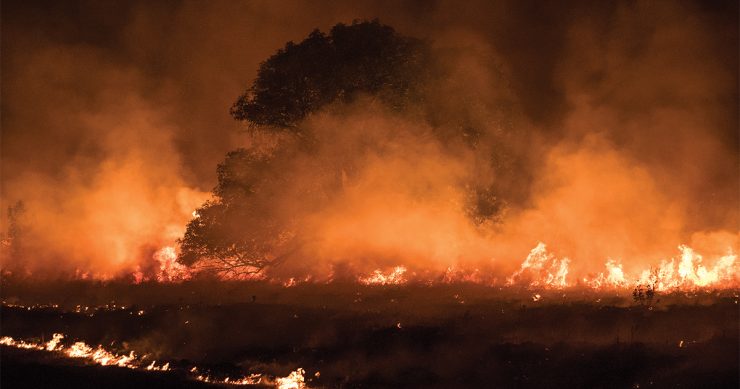Chapman University science and engineering student researchers show that large population growth in California’s wildland-urban interfaces — the once-open areas between the wilderness and land development — increases the likelihood of wildfires at residents’ doorsteps.
Contra Costa, Alameda and Riverside counties grew the most, placing more people and their homes at risk.
The research is now influencing how firefighters anticipate and respond to the spread of wildfires in regions with such expansions at the edge of wildlands, after the students presented their findings at the 2022 Fire and Climate Conference. More than 250 firefighters, public health officials and land managers attended the international gathering.
The Chapman student researchers used Census data to determine that nearly one-third of residents living in these intersectional zones experienced continued high population growth. Nearly 13% of California’s total population lives in areas at risk for wildfires like those threatening structures and scorching thousands of acres in Northern California, the Bay Area and near Yosemite National Park.
The increasing pressure from human activities at these intersections stretches over the past decade, said Shenyue Jia, visiting scholar with Chapman’s Institute for Earth, Computing, Human and Observing and mentor for the project.
“Understanding which regions of California’s wildland-urban interfaces have experienced significant population growth over the past decade can identify communities at greater risk of wildfire,” Jia said.
Fowler School of Engineering and Schmid College of Science and Technology students conducted the study for Chapman’s Grand Challenges Initiative.




